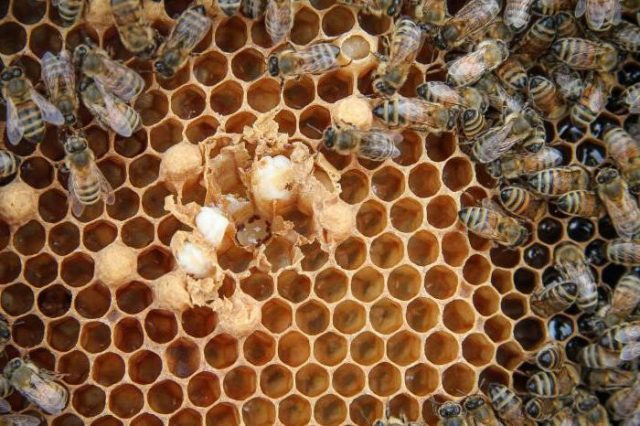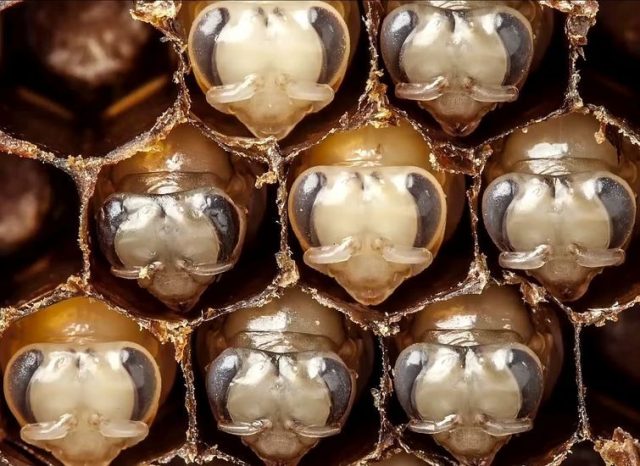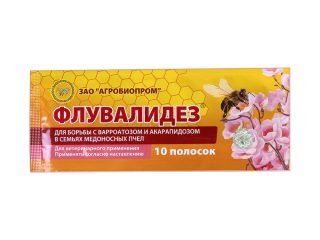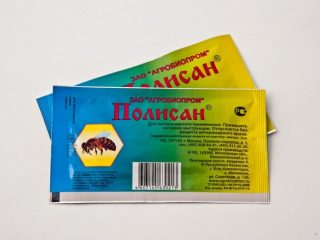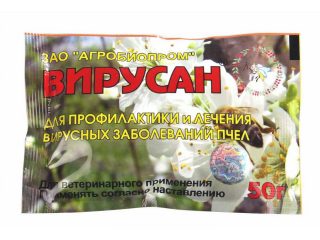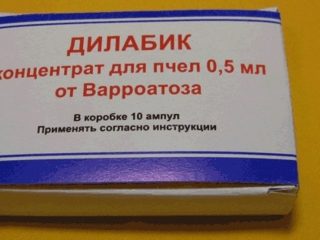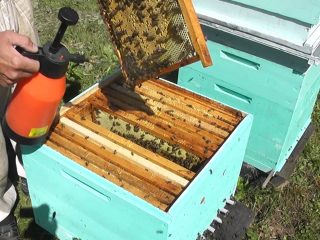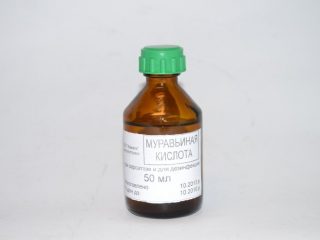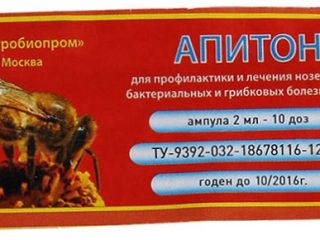Content
Ascospherosis is a disease that affects bee larvae. It is caused by the mold Ascosphera apis. The popular name for ascospherosis is “lime brood.” The title is apt. The larvae affected by the fungus after death are very similar to small chalk balls.
Why is ascospherosis dangerous?
When the fungus has grown to a visible state, it looks like white mold. That is what he is. Ascospherosis mainly affects drone larvae at the age of 3-4 days. Like any mold, the fungus grows on weakened organisms. Bees infected with varroa are more likely to develop ascospherosis.
This type of fungus is bisexual. It has sex differences in vegetative threads (mycelium). When two threads merge, a spore is formed, which has a very sticky surface. Due to this property, spores can spread not only within one hive.
The most common cases of ascospherosis are in the summer. Mold grows in damp places and high humidity. Favorable conditions for the development of ascospherosis arise:
- rainy summers with high humidity;
- when keeping an apiary in a humid area;
- after prolonged cold spells;
- with excessive use of oxalic and lactic acid.
Beekeepers often use organic acids to combat another bee problem - varroa.
In these places, the conditions for the reproduction of Askosphere Apis are the most favorable, since the walls of the hive can become damp due to insufficient or improper insulation. Air circulation is also worse than in the center, where the bees work hard with their wings.
Symptoms of bee disease
The appearance of ascospherosis in the hive can be noticed by the dead larvae lying in front of the hive, on the landing site or on the bottom under the honeycomb. When checking the hive, you may notice a white coating on the bee larvae. If the cell is not sealed, the head end of the larva is covered with mold. If the cells are already sealed, the fungus grows through the lid and infects the larva inside. In this case, the honeycombs appear covered with a white coating. In the opened cells you can find hard lumps attached to the walls of the honeycomb or freely lying at the bottom of the cells. These are larvae that died from ascospherosis. These “lumps” occupy about ⅔ of the cell volume. They are easy to remove from the cell.
Methods of infection
Fungal spores infect larvae in two ways: from the inside and through the walls of the honeycomb. When the spore enters the intestine, it germinates from the inside and then spreads through the walls of the honeycomb to other cells. Mold grows through the caps and entwines the honeycomb completely.
When spores contact the skin of the larva from the outside, the mycelium grows inside.In this case, ascospherosis is more difficult to detect, but there is a chance that it will not take on catastrophic proportions.
Routes of transmission of ascospherosis:
- the introduction of spores along with pollen into the hive by bees returning home;
- moving frames with beebread, honey or brood from an infected hive to a healthy one;
- when a bee feeds contaminated food to a healthy larva;
- spread by bees cleaning infected cells;
- when using equipment common to the entire apiary;
- with insufficient disinfection of hives.
Initially, bees bring the fungus from greenhouses, where it is always warm, humid and has poor air circulation. Mold thrives in greenhouses, and once it gets on a bee, it begins to grow in a living organism. Due to the fact that the mycelium grows into the body of the bee or larva, ascospherosis is very difficult to treat.
Stages of the disease
Askospherosis has 3 stages:
- light;
- average;
- heavy.
The light stage is also called hidden, since the number of dead larvae is no more than 5. This amount is easy to overlook or attributed to other reasons. But mold tends to grow and move to the next stage. The average degree is characterized by losses of larvae from 5 to 10.
Losses in severe forms amount to 100-150 larvae. It is believed that mild and moderate forms need not be treated, since losses are low. But ascospherosis is a bee disease caused by a fast-growing living organism. It is easier to eliminate mold as soon as its source is noticed than to wait until the fungus grows and matures into spores.
How to treat calcareous brood in bees
Ascosphere apis is sensitive to fungicidal preparations in the same way as any other mold.The main thing is not to overdo it with the dosage and not poison the bees at the same time. Garden fungicides should not be used, however. Their concentration for plants should be higher, and selecting the dosage for bees using an experimental method will be too expensive. Separate fungicides have been developed for the treatment of ascospherosis in bees:
- levorin;
- ascozole;
- ascovite;
- mikosan;
- larvasan;
- clotrimazole.
Nystatin is also recommended as an antifungal drug, but beekeepers have sharply opposed opinions about it. In addition to industrial antifungal drugs, beekeepers are trying to treat ascospherosis with folk remedies:
- garlic;
- horsetail;
- onions;
- celandine;
- yarrow;
- iodine
Of the folk remedies, iodine is the most effective. In fact, all other methods are based on the presence of free iodine ions in garlic and onions. The concentration of these ions is low and extracts need to be made.
Antifungal drugs only stop the growth of the ascosphere. There is only one guaranteed way to get rid of ascospherosis: complete burning of infected bees. If the bee colony is weak, it is better to do so.
How to treat ascospherosis of bees
Since any mold is difficult to destroy, when treating ascospherosis it is necessary to carry out a whole range of measures aimed at stopping the development of the fungus:
- carry out treatment of all hives in the apiary;
- the bees are moved to a new disinfected hive;
- bees are treated with fungicidal preparations.
To destroy the fungus inside bees, it is convenient to use a fungicide diluted in sugar syrup. This treatment of bees for ascosferosis is best carried out in the fall after pumping out honey. After collecting honey, the colony of bees is still fed with sugar in order to restore food reserves for wintering.The sale of such honey is prohibited, and it is undesirable to use such treatment in the spring. But the bees will provide “medicine” to the larvae in the cells.
Driving bees
Treatment for ascosferosis begins with placing a bee colony in a new, disinfected hive. Honeycombs taken from a healthy family and new dry food are placed in it. The old infected uterus is replaced with a young healthy one.
Heavily infected brood is removed and the wax is melted. If the combs are not heavily infected, they can be placed in the hive, isolating the queen from the brood. But if possible, it is better to get rid of diseased larvae, even if there are several of them. Mold grows quickly. Podmor is burned rather than infused with vodka or alcohol as a panacea for all diseases.
Since the bees themselves can also be infected with mycelium or ascosphere spores, they are treated with medications or folk remedies.
Treatment of bees for ascospherosis with medication
The method of using drugs for ascospherosis of bees depends on the form of the drug and the time of year. In spring, early summer and fall, fungicides can be fed with sugar syrup. In summer it is better to use spraying. Dosages and methods of use can usually be found in the instructions for the drug.
Syrup for feeding is prepared in the proportion of 1 part water to 1 part sugar. For spraying, take a less concentrated solution: 1 part sugar to 4 parts water.
Askozol
To feed 1 ml of ascozole, it is diluted in 1 liter of sugar syrup at a temperature of 35-40 ° C. Feed 250-300 ml per day per family for 1-2 weeks. It is necessary to feed every other day.
In summer, bees, walls and frames in the hive are sprayed with the drug.For spraying, 1 ml is diluted in 0.5 liters of a less concentrated solution. Spraying is carried out with a fine spray. Composition consumption is 10-12 ml per honeycomb frame. Spraying is repeated every 2-3 days until the family recovers. This usually requires 3 to 5 treatments.
Levorin
This fungicide affects the redox enzymes of the ascosphere. It is usually used as a top dressing. For 1 liter of syrup they take 500 thousand units. Levorina. Give twice with a break of 5 days.
Nitrofungin
Preferably used for treating hives. The walls and frames are sprayed with an aerosol. Consumption of half a bottle per hive. When feeding, make an 8-10% solution.
Clotrimazole
One of the most effective fungicidal drugs. Used for spraying hives. In autumn, it is added to sugar syrup for feeding.
Iodine
Iodine is difficult to attribute to both folk methods of combating ascospherosis and industrial ones. He is "in the middle". Levorin is an industrial preparation based on iodine. But you can make iodine fungicide yourself.
Treatment of ascospherosis in bees with iodine monochloride is very effective, according to beekeepers. In this case, they don’t even feed him or spray the frames and walls. 5-10% iodine monochloride is poured into polyethylene lids, covered with cardboard and placed at the bottom of the hive. By evaporating, the drug stops the development of the fungus.
A solution of iodine in sugar syrup for treating the hive is made independently. Iodine tincture is added to the syrup until a light brown liquid is obtained. This composition is sprayed once every 1-2 days. You can also feed the bees with the solution.
Treatment of ascospherosis in bees using traditional methods
Truly folk methods include attempts to cure ascospherosis with the help of herbs. Even for prevention this is of little use. Bunches of yarrow, horsetail or celandine are wrapped in gauze and placed on frames. Remove when the grass is completely dry.
The garlic is mashed into a paste, wrapped in plastic and laid out on frames. Of all the folk remedies for fighting mold on bees, garlic is the most effective.
Dried herbs are also used. They are ground into dust and sprinkled on bee streets. A handful of powder is consumed per hive. A decoction is made from horsetail: put it in a saucepan without compacting it, add water and boil for 10 minutes. Leave for 2 hours, filter and make syrup for feeding. Give the syrup to the bees for 5 days.
Sometimes a strong solution of potassium permanganate is used. But this product can only be used to disinfect the wooden parts of the hive.
Disinfection of hives and equipment
There are many ways to disinfect hives, but treatment with any method must be carried out as quickly as possible, since the fungal mycelium will grow into the wood. If this happens, there is only one way to cure ascospherosis: burn the hive.
The hive is burned with a blowtorch or “stoked” for 6 hours in an alkaline solution. Small equipment items are disinfected twice. If possible, they can also be soaked in alkali. The honey extractor is coated with a strong solution of lye or laundry soap and left for 6 hours. Afterwards, rinse thoroughly with water. All fabric items are boiled.
The honeycombs are removed from the infected hives and the wax is melted. If there are more than 50 affected larvae, the wax is suitable only for technical purposes. Merva is destroyed from him.
It is undesirable, but you can use honeycombs from a family slightly infected with ascospherosis. In this case, the honeycombs are thoroughly disinfected. Per 100 liters of disinfectant solution, take 63.7 liters of water, 33.3 liters of perhydrol, 3 liters of acetic acid. In this quantity, 35-50 frames with honeycombs can be processed. The honeycombs are kept in the solution for 4 hours, then dried thoroughly.
Set of preventive measures
The main prevention of any mold is its prevention. The most favorable conditions for the development of ascospherosis are dampness, lack of ventilation and relatively low temperature. In this case, no immunity will save you. For prevention, it is necessary to provide the bee colony with acceptable conditions. If the hives are left to winter outside, then provide external insulation and good ventilation.
It is for this reason that the hive needs to be insulated from the outside, and not from the inside.
It will not be possible to completely avoid dampness, especially if the winter is warm and slushy or there have been thaws. Therefore, in the spring, the bees are first transplanted into a clean hive, free from ascospherosis, and all frames are checked and those affected by ascospherosis are thrown away.
Another way to avoid ascospherosis is to feed the bees with pure honey, not sugar syrup. The syrup weakens bees and is only acceptable for medicinal purposes. The collected pollen is also left for the bees. A strong bee colony is less susceptible to ascospherosis than one weakened by hunger.
You should not use equipment from someone else's apiary. She may be infected with ascospherosis. Periodically, samples must be taken from the hive and tested for the presence of pathogenic microorganisms. Dead bodies and other debris from the bottom of the hive will do.
Conclusion
Askospherosis can leave the beekeeper without basic means of production. But with careful attention to bee colonies, the growth of the fungus can be noticed at the initial stage and measures can be taken in time.

